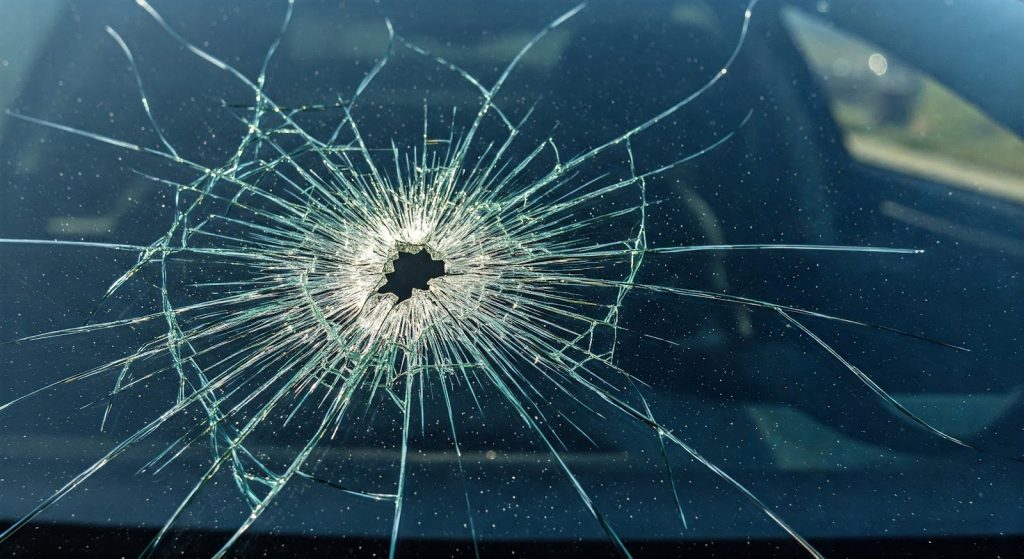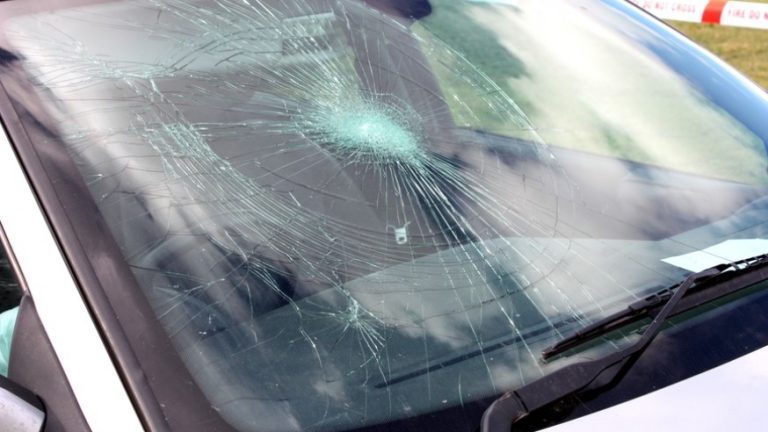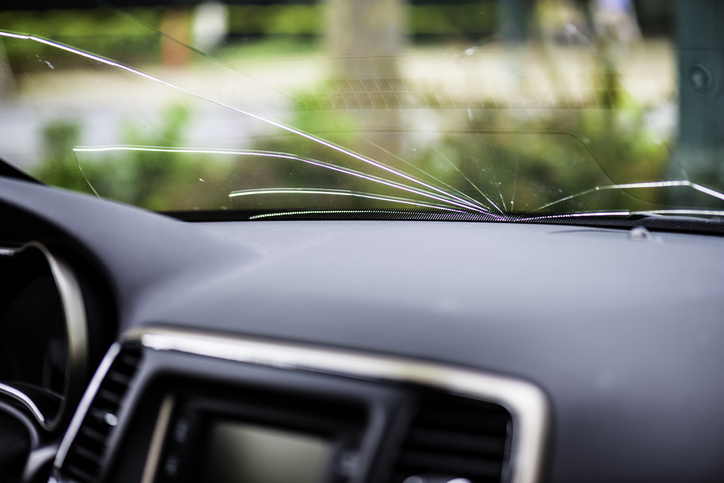Windshield cracks are among the most common issues we handle at Auto Glass Pro Brampton, and while they may look similar at first glance, not all cracks are the same. Every day, our technicians assess various forms of windshield damage, and being able to accurately identify different crack types is critical to determining the safest and most cost-effective solution for the customer.
Understanding windshield crack types is about recognizing which damages can be safely repaired and which require immediate replacement, as well as how to make those calls confidently in real time. In this guide, we’ll break down the most common types of damage we see, how they differ, and why it matters to get the diagnosis right.

Why Identifying Windshield Crack Types Matters
Correctly identifying windshield crack types isn’t just good practice — it’s critical to ensuring structural safety and delivering accurate service. The windshield is a load-bearing part of the vehicle’s frame, especially in rollover scenarios, and certain crack types can significantly weaken that integrity if left untreated or misjudged.
From a cost perspective, a professional auto glass repair can save the customer their deductible and avoid unnecessary glass waste. On the other hand, overlooking a spreading edge crack or misclassifying a stress fracture could lead to liability issues down the road.
Not all types of windshield chips or types of window cracks behave the same. Some can be safely stabilized with resin. Others are early signs of complete failure. Knowing the difference is what sets professionals apart.
Chips vs. Cracks: What’s the Difference?
In the field, we usually see two main forms of glass damage: chips and cracks.
- Chips (also called stone chips or pits) are small, localized points of impact. They can appear as bullseyes, stars, or surface divots, and most are repairable if caught early. These fall under what we refer to as types of windshield chips or types of windscreen chips.
- Cracks, on the other hand, involve a visible line in the glass that spreads from the point of impact or stress. Cracks may start as a result of a chip or form independently due to structural or temperature stress. Depending on the size and location, they may or may not be repairable.
It’s worth noting that even among experienced technicians, terminology can be used interchangeably in conversation. In general, chips often represent a chance to save the glass, while cracks are more likely to lead to a full auto glass replacement, especially when they impact structural zones or driver visibility.
7 Most Common Windshield Crack Types
Below are the most common windshield damage types we see at Auto Glass Pro Brampton, along with notes on how they form, what they look like, and what a typical technician response should be.
1. Bullseye Crack
This is one of the most recognizable types of windshield chips. Caused by a direct hit from a small object like a rock, bullseye cracks appear as a circular impact mark with a dark center, often surrounded by concentric rings.
- How it happens: Sudden impact from gravel or road debris.
- Visuals: Clean circular shape, typically up to one inch in diameter.
- Decision point: If the damage is not in the driver’s line of sight and the inner layer is intact, this is usually repairable using resin injection. Anything larger or with signs of spreading may call for replacement.
2. Star Break
A star break forms when short cracks radiate outward from a central point of impact, resembling a star. It’s a common variant within the broader category of types of windscreen chips.
- How it happens: Sharp object contact at a high velocity, often from freeway travel.
- Visuals: Central chip with several short cracks fanning out.
- Decision point: If the cracks are under three inches and not in a critical viewing area, repair is often possible. However, star breaks are known for spreading under pressure or temperature shifts, so time is a factor.
3. Combination Crack
This crack includes characteristics of both bullseye and star breaks, making it more complex to assess. It’s one of the more difficult windshield damage types for inexperienced techs to diagnose properly.
- How it happens: High-speed impact with dense debris.
- Visuals: Circular chip with radiating cracks.
- Decision point: Inspect for spreading. If the total diameter is under the repairable threshold (usually around 2.5 cm) and the damage is stable, it can be repaired. Otherwise, replacement is the safer call.
4. Edge Crack
Edge cracks start within two inches of the windshield perimeter and tend to grow quickly due to structural stress. These cracks often signal deeper compromise in the windshield frame.
- How it happens: Pressure buildup near the glass edge or prior installation weaknesses.
- Visuals: Long, linear cracks running parallel or perpendicular to the edge.
- Decision point: These typically require replacement. Their location makes them prone to rapid spreading, and even small edge cracks can undermine the glass bonding strength.
5. Floater Crack
A floater crack begins away from the edge, typically near the center of the glass. These are more forgiving, depending on size and location.
- How it happens: Internal stress or moderate impact.
- Visuals: Clean crack with no relation to the edge.
- Decision point: If under six inches, not in the driver’s line of sight, and not spreading, a floater crack can often be repaired. Monitor closely for signs of extension.
6. Stress Crack
Unlike other types of window cracks, stress cracks don’t result from impact. They occur due to thermal expansion and contraction, for example, using hot defrosters on a frozen windshield or pressure differences after a car wash.
- How it happens: Sudden temperature change or structural flexing.
- Visuals: Usually a clean, slightly curved line with no visible impact point.
- Decision point: Since these cracks are signs of deeper stress in the glass, they almost always require replacement. Reinforcement alone isn’t reliable in these cases.
7. Long Crack
Any crack longer than six inches is generally classified as a long crack. These can begin as minor chips and gradually extend over time, especially under pressure or vibration.
- How it happens: Progression from an unattended chip or minor crack.
- Visuals: Linear crack often stretching across the windshield.
- Decision point: Almost always a replacement scenario. These are beyond repair parameters due to length and risk of spreading.
Repair or Replace? Making the Right Call
At Auto Glass Pro Brampton, our approach is always repair-first, as long as it’s safe, structurally sound, and cost-effective for the customer. Certified technicians assess every case by factoring in crack location, length, depth, and whether the damage is stable or spreading. Chips away from the driver’s line of sight and cracks under six inches are often candidates for resin repair.
When replacement is unavoidable, for example, in edge cracks, long cracks, or stress fractures, we move fast. Most windshield replacements are completed within 45 minutes, either in-shop or via mobile service. As part of our full-service approach to windshield repair and replacement, we also work with insurance providers to help reduce or eliminate out-of-pocket costs, while keeping safety a priority.
Get an Accurate Diagnosis With Auto Glass Pro Brampton
Knowing how to identify windshield crack types quickly and correctly is a core part of the work we do every day. It’s what allows us to make safe, consistent recommendations and avoid unnecessary replacements.
The goal is always the same: accurate diagnostics, honest assessments, and efficient service. With fast mobile capability across Brampton, a wide inventory of auto glass, a lifetime warranty against leaks and defects, and a low price guarantee in place, we’re well equipped to deliver high-value results without compromise.



